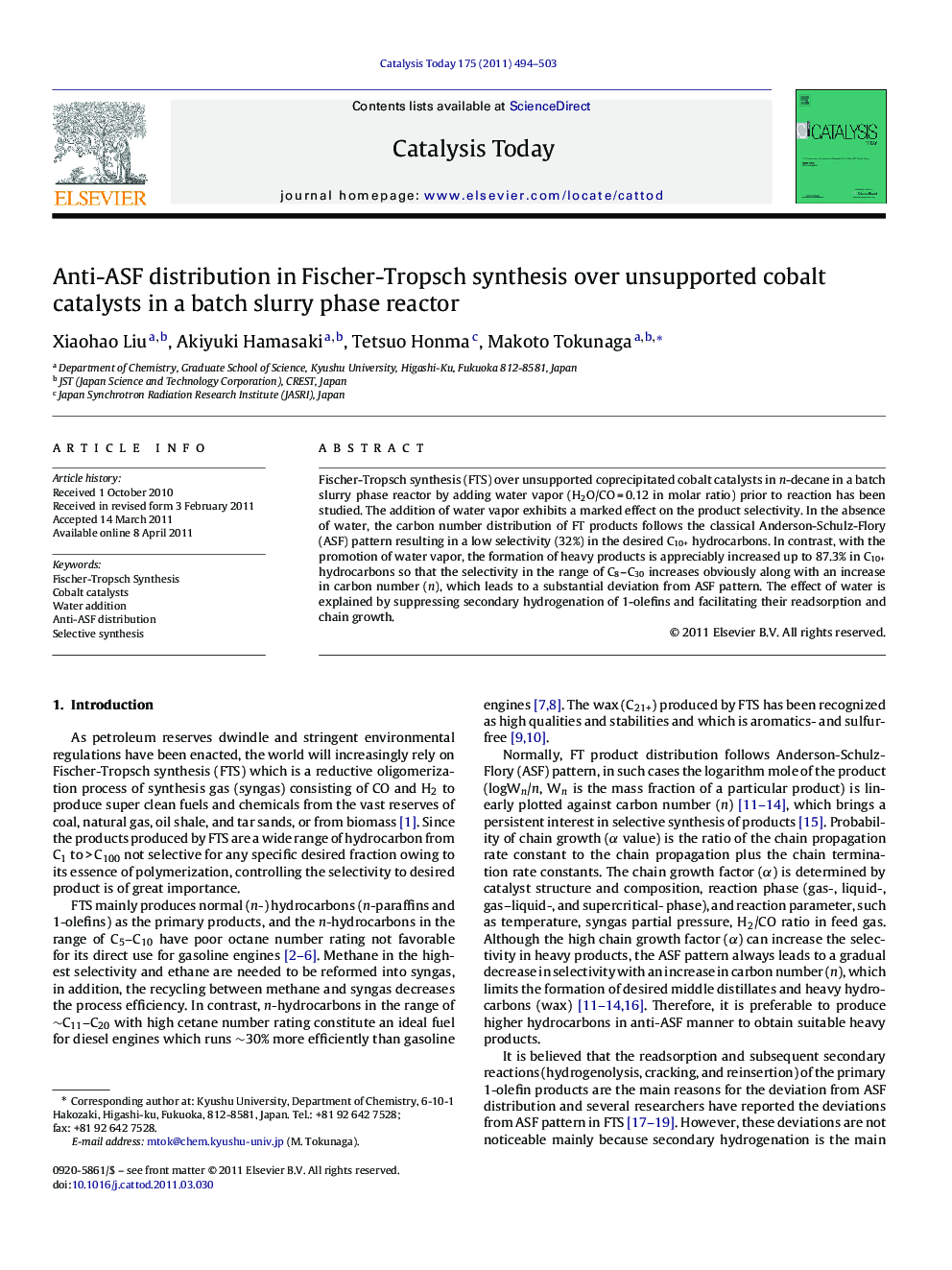| کد مقاله | کد نشریه | سال انتشار | مقاله انگلیسی | نسخه تمام متن |
|---|---|---|---|---|
| 55781 | 47063 | 2011 | 10 صفحه PDF | دانلود رایگان |

Fischer-Tropsch synthesis (FTS) over unsupported coprecipitated cobalt catalysts in n-decane in a batch slurry phase reactor by adding water vapor (H2O/CO = 0.12 in molar ratio) prior to reaction has been studied. The addition of water vapor exhibits a marked effect on the product selectivity. In the absence of water, the carbon number distribution of FT products follows the classical Anderson-Schulz-Flory (ASF) pattern resulting in a low selectivity (32%) in the desired C10+ hydrocarbons. In contrast, with the promotion of water vapor, the formation of heavy products is appreciably increased up to 87.3% in C10+ hydrocarbons so that the selectivity in the range of C8–C30 increases obviously along with an increase in carbon number (n), which leads to a substantial deviation from ASF pattern. The effect of water is explained by suppressing secondary hydrogenation of 1-olefins and facilitating their readsorption and chain growth.
Fischer-Tropsch synthesis (FTS) always exhibits Anderson-Schulz-Flory (ASF) pattern in the carbon number distribution at conventional reaction conditions, which limits the selective synthesis of desired middle distillates and wax. In our study, the addition of small amount of water into a batch slurry phase reactor gives a marked effect on the carbon number distribution so that the selectivity in the range of C8–C30 increases obviously along with an increase in carbon number (n), which leads to a substantial deviation from ASF pattern (78.6% in C11+ hydrocarbons). In contrast, in the absence of water, the carbon number distribution of FT products follows the classical Anderson-Schulz-Flory (ASF) pattern (28.3% in C11+ hydrocarbons). The effect of water is explained by suppressing secondary hydrogenation of 1-olefins and facilitating their readsorption and chain growth.Figure optionsDownload high-quality image (180 K)Download as PowerPoint slideHighlights
► Fischer-Tropsch synthesis (FTS) is carried out in a batch slurry phase reactor.
► Water addition suppresses the hydrogenation of in situ 1-olefins.
► In situ 1-olefins are efficiently utilized for secondary chain growth.
► Water addition leads to a remarkable anti-ASF distribution.
► Hydrogenolysis of the FT hydrocarbons is a reversible process to FTS.
Journal: Catalysis Today - Volume 175, Issue 1, 25 October 2011, Pages 494–503